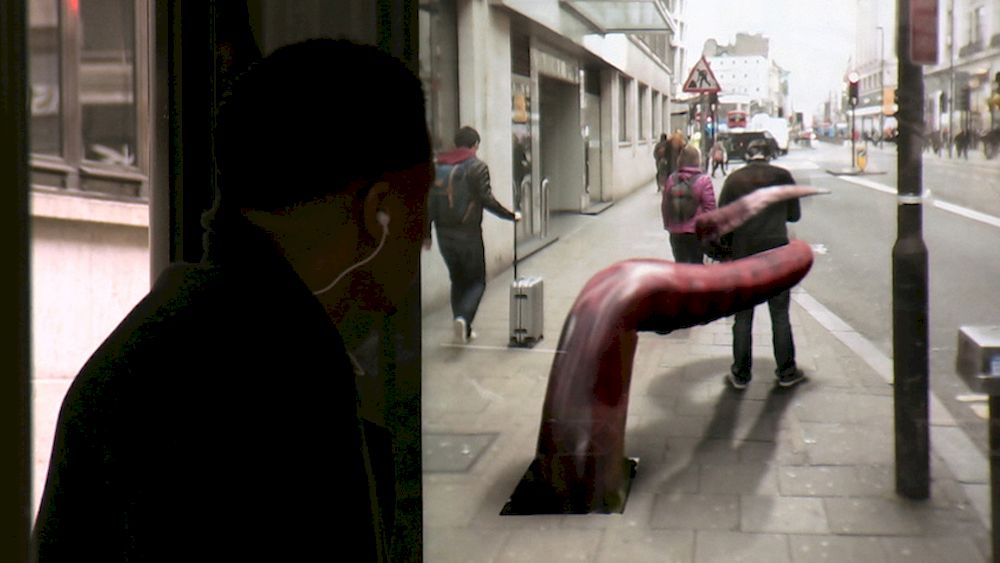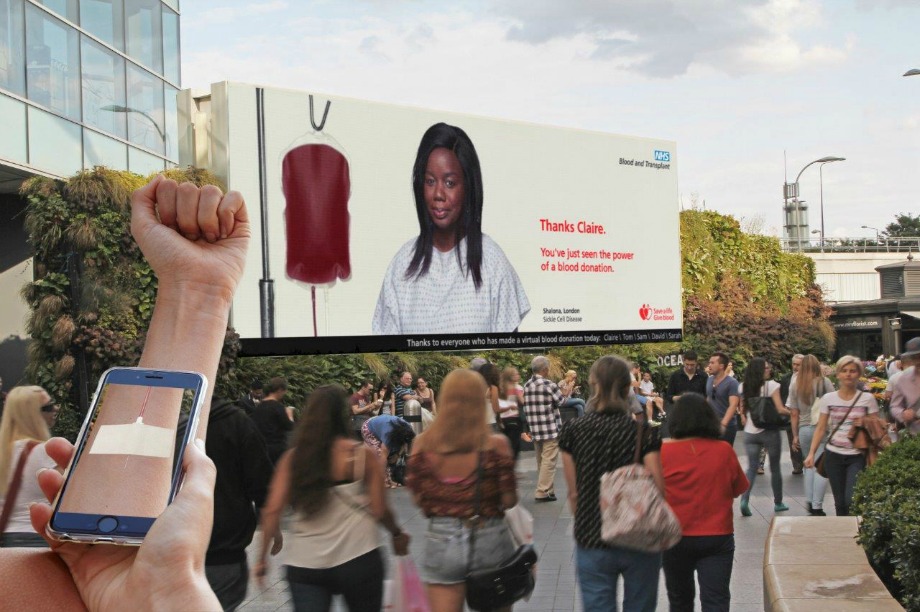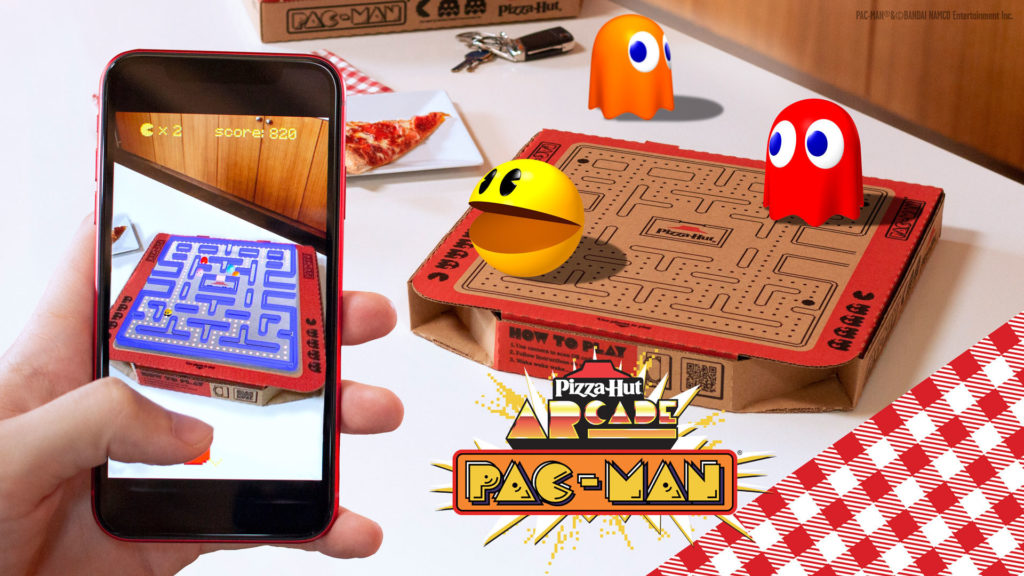Let HR1Tech to give you a look at 7 creative marketing campaigns using AR, VR that have been developed and deployed by big brands around the world that you may have not known about.
AR (Augmented Reality) and VR (Virtual Reality) are two technologies that, although not too new, have not yet been commonly applied in our daily lives. In the field of specialized Marketing, campaigns using AR or VR technology have a targeted experience that enhances the user's experience with the brand, thereby leaving so much impression in their mind. In this article, we will explore 7 creative marketing campaigns using AR, VR that have been successfully implemented by major brands around the world. These campaigns showcase the power of these technologies to capture attention, drive engagement, and achieve marketing goals. Let find them out with HR1Tech right now.
1. Pepsi Max Bus Shelter: An Augmented Reality Experience
In order to share the message "Live For Now", roughly translated as Live for every moment, Pepsi Max created an extremely interesting "Unbelievable" outdoor interactive campaign. At that time, Pepsi Max joined hands with Grand Visual to apply AR technology in a creative idea, creating an advertising campaign that created a lot of surprise and curiosity among passersby.

At the bus shelter screen, Pepsi Max has set up an advertisement in the direction of an augmented reality experience, helping to "turn" it into a glass window, able to see through the street ahead. All images of vehicles, passersby, and buses are realistically reproduced. Along with that, AR technology has incorporated horror scenes such as giant laser-shooting robots, tentacled manholes or an approaching fiery asteroid to attract attention and cause amazement for viewers.
2. Merrell's Trailscape VR Campaign
To support the launch of its new Capra climbing shoe, Merrell brand created a VR experience called Trailscape for customers to experience what it's like to climb dangerously. Participants walk along a simulated wooden bridge to create a whole new level of climbing experience. Added tactile elements like rope walkways and wooden swings make this one of the most immersive VR experiences to date for any brand. The campaign, which debuted at the 2015 Sundance Film Festival, is the brainchild of Merrell, Hill Holliday and Framestore VR Studio.
Trailscape has done a great job integrating their brand in an incredibly intuitive and powerful user experience. This is not something we typically see in a VR experience for a brand's marketing campaign. From the users' reactions, we can also tell that they had an extremely impressive and memorable experience!
3. NHS Blood and Transplant's Virtual Blood Donation Campaign
NHS Blood and Transplant has launched a virtual reality campaign, in the form of DOOH digital advertising, to deploy and launch a humanitarian blood donation program. This can be said to be one of the most successful and meaningful marketing campaigns using AR ever.
Accordingly, this campaign uses AR technology connected to a large outdoor advertising screen, displaying empty blood bags along with images of patients emaciated by anemia. At that time, participants will have a sticker on their hand. Image recognition technology from the iPhone will then scan that sticker, and will display the bandage, needle and blood transfusion tube on the arm. When observing with the phone, they will see blood slowly flowing down the blood transfusion tube to the blood transfusion bag. When the blood bag is full, the patient gradually becomes fresh and recovers.

4. Samsung's "Moon Landing" Campaign
Samsung has collaborated with NASA, creating a VR experience that simulates the process of humans walking on the moon as real as it is. Recreating the low gravity of the moon in vivid 4D, experiencers will don a spacesuit and harness while wearing a Gear VR headset. They then immerse themselves in a visual and physical experience that recreates humanity's mission to the moon.
This is perhaps the most realistic moonwalk experience any brand has ever created. Samsung's design team and NASA's Active Reaction Gravity Offload System (ARGOS) team worked together to make this feel as accurate as possible. This campaign was famous throughout the United States and successfully brought the Samsung name to wider coverage in this extremely demanding consumer market.
5. The Walking Dead Scary Shelter Campaign
To promote the release of season 5 of the series The Walking Dead, a bus stop in Vienna, Italy had a large screen placed right in front of everyone. This is nothing worth mentioning if it is just a normal advertising screen. In fact, this augmented advertising (AR) technology has been perfectly integrated, appearing with a series of somewhat scary and horror videos.
It can be seen that this marketing campaign is quite similar to Pepsi's at the beginning of the article, creating surprise and fear among those waiting for the bus. Videos with the sudden appearance of zombies become more terrifying because the scene in them is exactly simulated in real life. The only difference is that the zombies will be completely simulated using AR technology and are completely harmless to audiences.
6. Pizza Hut's Newstalgia Campaign
Pizza Hut will awaken nostalgic emotions in customers with a new brand campaign, styled with Newstalgia, roughly translated as "nostalgia" (nostalgic but new). This campaign is a breath of fresh air that celebrates everything people love and associate with the Pizza Hut brand – from the Book It badge, classic arcade games, red cups and lights. Tiffany style to Pizza Hut's legendary pizzas.
To promote the campaign, Pizza Hut partnered with a new spokesperson, comedian Craig Robinson. In a TV commercial, Robinson will enjoy a $10 Tastemaker™ pizza while re-playing the nostalgic game PAC-MAN. In addition, Pizza Hut also cooperates with PAC-MAN to bring an exclusive PAC-MAN pizza box. The box's packaging features a virtual reality version of the PAC-MAN game that fans can play using their smartphones.

7. The Weeknd's Virtual Concert
Canadian artist The Weeknd is the first artist to use TikTok for a virtual reality concert, partnering with WAVE, a startup specializing in XR concerts.
To promote their new album After Hours, TikTok delivered a completely digital live experience with scenes that change with each song. Users can choose scenes by voting and sharing comments displayed directly on the screen.
The hashtag #TheWeekndEXP reached 1.3 billion views and the concert raised more than 350,000 euros for a charity cause he funded. Besides being the most streamed song of 2020, The Weeknd also has one of the most interesting AR experiences that not every singer can create for their fans.
The development of AR is progressing strongly, with more and more businesses applying this technology to create more engaging experiences for users. At the same time, brands must also have continuous changes, becoming increasingly creative and innovative to create the best effects. These seven AR and VR marketing campaigns demonstrate the immense potential of these technologies to create groundbreaking and impactful marketing experiences. As AR and VR continue to evolve, we can expect even more innovative and immersive campaigns that push the boundaries of marketing and redefine the way brands connect with their audiences.